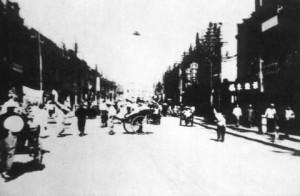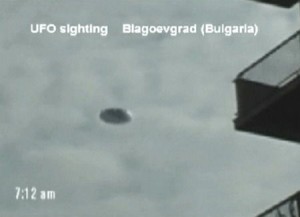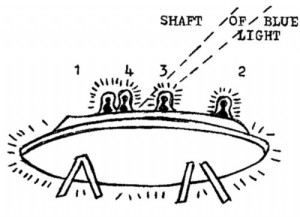Warning: strlen() expects parameter 1 to be string, array given in /home2/orbman69/public_html/wp-includes/functions.php on line 262
(Last Updated On: )
THINK ABOUTIT ABDUCTION REPORT
Date: summer of 1940
Sighting Time:
Day/Night: Night
Location: Geneseo, Illinois
Urban or Rural: -rural
No. of Entity(‘s): 3
Entity Type:
Entity Description: short, hairy man-like creature of the highly oriental cast – a pygmy Japanese, perhaps, which I think he was, one of the more primitive of the hairy Ainus who live in the northern islands of Japan.”
Hynek Classification: CE-IV (Close Encounter IV) Abduction of the witness or other direct contact
Duration:
No. of Object(s): 1
Height & Speed:
Size of Object(s):
Distance to Object(s):
Shape of Object(s): circular
Color of Object(s):
Number of Witnesses: single
Special Features/Characteristics:
Source:
Summary:
Full Report
by Martin S. Kottmeyer
Not long ago, a ufo researcher asked for help locating details about a ufo case he learned about while reading Joe Lewis’s encyclopedia UFOs and Popular Culture (2000). The case was set in Geneseo, Illinois, purportedly back in 1940. It turned out to be a frustrating search. I checked my copy of The I-Files that I thought had every ufo case ever set in the state of Illinois. It seemed comprehensive to me because it included even local ufo cases I knew the solutions to. It wasn’t there.
I searched through the indexes of dozens of books about abductions and ufo history. I pushed my memory for fragments of dimly relevant-sounding cases. I finally found a brief and delightful use in John Keel’s The Mothman Prophecies. It gave no clue where the original story was set down. Weeks later, I was told by the guy he had achieved success from a British ufo researcher. He tracked down the original source of the story to a 1968 Saucerian Press book, Frank Martin Chase’s Document 96. The book is an incredible rarity these days and a copy can cost you hundreds of dollars if you can even find one. From my efforts, I can safely say the best works on the subject of ufo abductions have never described this case – understandable given the circumstances – but I confess I have come to regard it as a little treasure and want to sing its praises. So walk with me as we revisit the Geneseo Illinois close encounter of the 4th Kind.
It is the summer of 1940 and a gentleman involved in industrial chemistry named Rex Ball is in the middle of an exhausting drive from Detroit. Rolling along, he is puzzled to see in the moonlight a locomotive in the middle of nowhere draped in pipes that seemed to be conducting steam to some underground location, presumably a mine. He travels a bit further, but he is so tired he is forced to pull over to take a rest. As he drifts to sleep, three powerfully-built little men approach. They are half his size. They lift him and walk him back to the area of t h e locomotive. Nearby, there is now a circular ufo. It hovers atop silent blue exhaust flames. On the Saturn Ring type railing, a man in light green aviation garments is looking around with binoculars.
“I had a definite impression of a short, hairy man-like creature of the highly oriental cast – a pygmy Japanese, perhaps, which I think he was, one of the more primitive of the hairy Ainus who live in the northern islands of Japan.”
There is a lapse of memory at this point, then he finds himself dressed in a shabby U.S. army uniform and being led by a group of soldiers to some sort of cave or underground tunnel. These soldiers are different from the Japanese. He has led first into a large chamber that by look is part concrete construction, part rough-hewn rock. Then he passes through what look likes a series of officers’ quarters in which are “erect and hard-bitten men in uniforms of U.S. Army officers of field grade.” In one, he sees a Filipino mess-boy giving a massage to a white American officer. His memory jumps. He is now outside, alone in the night air. The people that were escorting him reappear and guide him into another tunnel and another large chamber where there are more officers. They seem familiar to him, yet not familiar at the same time.
Then he’s told, “You are now under Fort Knox.” But Fort Knox is in Kentucky, hundreds of miles away. Eventually, he is brought to a briefing room. A dozen men in civilian clothes sit behind a long desk spanning nearly the length of the room. In the center is a graying man with a general’s insignia. Beside him was a girl adjutant with long blonde hair. He is scrutinized sharply, particularly by the woman. In a low voice comes the verdict, “Take him back.” He is turned to leave, and then hears, “Seal his mouth – call him a nut!”
He is taken through something resembling an office building sub-basement and then he moves through what appears to be the ready room of the saucer pilots. Short orientals were lounging around, smoke hanging in the air. Flight outfits were on the wall. Some were equipped with claws or webs for apparent grasping at hand-holds along with the ship. Along one wall was a glass case arrayed with weapons that looked more appropriate to science fiction comic books. There were also electronic consoles and devices for navigation and the plotting of positions. From there he exits the facility. His memory jumps once more and he finds himself in a small community hospital in the town of Geneseo.
He doesn’t think it’s a hallucination, but even he has trouble with the obvious paradoxes. He can’t really have been to Fort Knox. If the saucer was an American secret weapon, why are the pilots Japanese? If it is a Japanese weapon, why are there American Army personnel? A drawing accompanies the tale-bearing a caption that reads “The Rex Ball UFO Case: A Saturn-Disc Craft with Platform, Tripod Gear, brilliant landing light, and Pygmy Jap Crewman, Hovering.” One detail that should be noticed is the projection on the top consisting of a circle on a metal post. This is recognizably a radio direction finder. I can’t recall ever seeing another ufo drawing with this particular device on it, but it is telling of the period. You saw them repeatedly in the Fifties and Sixties film and tv work.
As an example, you can see it in the film Phantom from Space (1953). You can’t miss it. While these things were usually merely a few inches in diameter, for reasons never stated, in this movie the direction finder is as big as the car that it sits on top of. It always makes me laugh. The slit windows along the wall of the saucer also seem unique among ufo drawings. They seem inspired either by the viewing slits in tanks or the bunkers used in atomic testing.
The blue flame exhaust naturally suggests the craft is based on jet or rocket technology of the era and reinforces the presumption that the saucer was created on earth by and for the American military. Alien technology was usually presumed to involve invisible forces like magnetism or anti-gravity instead of rocketry. It is interesting that there are two exhaust flames for the mid-Sixties was the heyday of Project Gemini, the manned spacecraft test-flight program bridging Project Mercury and the moon-quest’s Project Apollo. Gemini spacecraft was lifted into orbit by Titan boosters and they had distinctively had two rocket engines and twin exhausts, different from the Agenas and Saturns of the other two projects. Rockets are not silent, though. Another problem. While Ball’s statement sets the story in 1940, we can discount that. The craft is clearly a flying saucer and we know that the concept derives from a journalist’s error in 1947. Putting the story in 1940 makes it an anachronism.
Using the word pygmy in the size description of the pilots reflects generalities given by ufo buffs throughout the 1950s and 60s. The hairiness of the pilots specifically echoes a string of Venezuelan cases in November and December 1954 that were embraced by both Donald Keyhoe and Coral Lorenzen in their writings as the most credible they had seen. It should be blatant that it would be hard to parse these guys as consistent with current Grays. They are explicitly regarded as primitive in appearance rather than futuristic, one of the curious conventions seen in early writings about extraterrestrial life, including early ufo literature.
[For a full historical background, see my article “Headhunt – Seeking the Degenerates among the Primitives – Varicose Brains, Part 3” Magonia #77 March 2002 pp. 3-17.] Hairy Ainus just can’t be confused with bald Grays. The fact that the entities walking on the rim of the saucer is somewhat unusual, though there are two precedents. The Steep Rock case – a confessed hoax – had entities walking on the rim while the saucer floats in water. More acceptably, one can point to Father William Gill close encounter of Boianai, Papua, New Guinea, June 1959, one of the most highly regarded cases in ufo history. It had normal-sized men walking around on top of a saucer floating silently the air. Perhaps significantly, Gill was of the opinion the saucer was a strange new device of the Americans. I don’t think there are any cases in the ufo abduction literature where Grays are walking on a platform outside the craft. One glitch in the comparison is that there were no exhaust flames beneath the crafts seen by
Gill and the people around him.
The memory lapses echo the missing time syndrome inaugurated by the premier American abduction case, a.k.a. Betty & Barney Hills’ The Interrupted Journey (1966). The Oriental aspects of the entities pick out a detail both Barney and Betty agreed upon concerning their abductors. Barney, in his April 1964 playback session said, “They had Oriental sort of eyes, but the eye socket gave an appearance of being much larger than what it was because nature had developed a roll of fat around the eye.” (IJ: pp. 305-6) Betty, in her June 6, 1964 session, said “I keep thinking that the crewmembers are Oriental, Asiatic. Only they were not as – they’re short.”
Though borrowing material from pro-extraterrestrial-ufo authors, the underground base with its saucer pilot ready room and American officers unambiguously sets the story in a firmly terrestrial framework. Rex Ball’s case thus mixes and matches ufo lore, but ultimately privileges the theory that saucers are an American secret weapon. It bears emphasis that this was still the dominant theory in the general culture according to polls taken in the Sixties. In a 1969 opinion survey, people were asked whether this statement was true: “Most UFOs are due to secret defense projects, either ours or another country”
Adults answered True: 57% False 43% (N = 1798) Teenagers answered True 54% False 46%. Authors of ufo books may have been nearly unanimous in thinking ufos were aliens, but they hadn’t made the other idea disappear by a long-shot. The long trek through underground corridors and sudden scene shifts create a mood reminiscent of dreams. At times it seems almost like a pastiche of Bond films. The large chamber of rough-hewn rocks and concrete recalls the volcano crater base operating in Japan in You Only Live Twice (1967). The talk of Fort Knox recalls Goldfinger (1964). There was also a flying saucer cave in Casino Royale (1967), the Bond parody. Most Bond films had blondes and people getting massaged. The long corridors first reminded me of the Japanese monster movie The Mysterians (1957) which included Japanese looking aliens that set up a base to take over Earth and acquire fertile women. That base had glass-enclosed equipment, too, though admittedly not weapon display cases. There are admittedly other possibilities for such stuff like The Man from UNCLE (1964) and Get Smart (1965) TV spy series.
The order “Seal his mouth. Call him a nut!” is something that sounds very generic, something that could easily have been uttered in any number of the Cold War spy thrillers of the era. John Keel clearly loved the line. He was that single ufologist I found who mentioned Rex Ball in his writings. Keel was a connoisseur of paranoia and he found the case helpful in his master-work The Mothman Legend There he was pleased to boost it as illustrating the nature of ufo secretiveness. In the tag line to one chapter he wrote, “That seems to be the battle-cry of the phenomenon, ‘Make him look like a nut!’” The use of paraphrase instead of the exact quote is not untypical of saucer writing. So, too, is the fact that he mistakenly wrote that Ball woke up in a field, instead of a hospital. Though some might cynically wonder if Keel suppressed the detail about waking up in a hospital to reduce the thought Ball had been mentally ill, I don’t think that was actually a concern for Keel who was only too happy to concede saucer-folks were often hallucinating. Ball did say he fell asleep in the first part of the story and that is doubtless the source of the mistake. Keel simply jumbled things in his memory.
I think the same may true of Ball but on a somewhat larger scale. The setting of the story in 1940 is clearly a false memory in some sense. I’m inclined to think the tale came out of a dream given the maze of corridors and the absurd and implausible element of a quick and largely pointless round trip to Fort Knox. By pointless, I mean, why bother with all the walking? Couldn’t they have just held him and called down for orders on what to do with Ball? Why take him all-around a secret base that he never would have suspected without the escort?
All of it seems like something belonging in the Sixties. Maybe he was influenced by how Betty reified her dreams into an alien reality and did something similar, taking a dream of a saucer and underground base he has in the Sixties, adding it to a real trip from 1940 in which he took a nap. He ends up with a singular little false memory of ufo abduction. It may have been less innocent than that of course. I don’t say it’s impossible there is a confession lying around in somebody’s diary that Ball or Chase consciously contrived the tale, but, personally, I think the absurdities go beyond the simple dramatic license. Whatever it’s ultimate means of construction, the Geneseo abduction is unique. Its unreality is underscored by its irrationality and the larger problem that it is unlike any other abduction case in the ufo literature.
There have never been any other stories of an underground military complex in this part of the Midwest that I am aware of. Nor have I ever heard of a group of hairy Ainu pilots either in the American military or in later ufo literature. Some may be tempted to term this a transitional case in the evolution of the ufo mythos – one that provides an intermediate form between the secret weapon beliefs of the 50s and later forms of the abduction mythos like The Dulce Base tales of Myrna Hansen, Christa Tilton, etc. in the 80s. I feel that would be a dubious judgment. Rex Ball’s tale is obscurity. It seems more like a sterile hybrid, a mule of a case, that joined strands of ufo lore and spy fiction into an ugly product that spawned no offspring of its own. Underground bases, even vast complex ones, are too much a commonplace of myth to think Ball’s story specifically fathered the Dulce Base tales, particularly as there is nothing else shared in the details.
The Geneseo tale is merely a nuisance in the larger scheme of ufo mythology. As we noted, it does share certain annoying similarities to other abduction narratives – missing time, oriental facial features, pygmy-size – but this was very much high-profile stuff in the period and doesn’t require any special knowledge. Those touting the extraterrestrial nature of ufo abductions will doubtless shrug it off as completely irrelevant. Yet it is a lovable lost little mutt – a love child of Sixties paranoia. If you think of abductions as a psychosocial phenomenon, there is no denying it is a member of the breed. It just has a very unexpected pedigree.



Related Reports
Warning: strlen() expects parameter 1 to be string, array given in /home2/orbman69/public_html/wp-includes/functions.php on line 262
1 min read
1952: UFO with Humanoids in Prospect Heights Illinois
Warning: strlen() expects parameter 1 to be string, array given in /home2/orbman69/public_html/wp-includes/functions.php on line 262
12 min read
1963: The Wayne City, Illinois Car Chase
Warning: strlen() expects parameter 1 to be string, array given in /home2/orbman69/public_html/wp-includes/functions.php on line 262
2 min read
1999: Abduction on Carlyle Lake